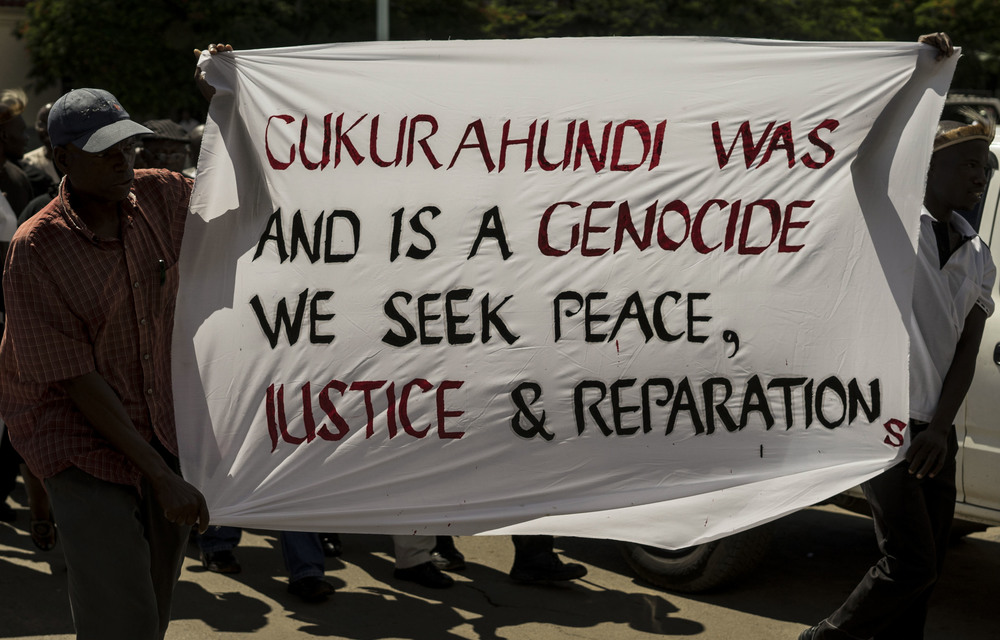
By Desire Tatenda Dobie FOR most victims of past human rights violations, confronting the painful memories of the past has been one of the best ways of alleviating the pain.
It lays the foundation for the building of a more peaceful future. Memorialisation initiatives have been important elements of this process.
Memorialisation generally refers to the process of preserving memories of people or events. It can be a form of address or petition or a ceremony of remembrance or commemoration.
It can also be a memorial site of remembrance.
In the context of transitional justice, memorialisation is used to honour the victims of human rights abuses.
Memorialisation looks at the healing of the memory of trauma and creates a new memory for society.
Apart from informing and shaping both the culture and conscience, memorialisation ensures that the truth is not just recovered, but also preserved as part of one comprehensive process.
It is a universal need for both those being memorialised and those who are grieving.
- Chamisa under fire over US$120K donation
- Mavhunga puts DeMbare into Chibuku quarterfinals
- Pension funds bet on Cabora Bassa oilfields
- Councils defy govt fire tender directive
Keep Reading
The United Nations basic principles on the right to a remedy and reparation recognise “commemorations and tributes to the victims” as a form of reparation.
Memorials publicly recognise that victims are entitled to redress and respect.
They are also a form of reparations or compensation efforts that seek to address past human rights violations.
They aim to provide compensation for losses endured by victims of abuse.
Memorials help societies and communities reconcile tensions within victims by demonstrating respect, acknowledging the past and ensuring non-recurrence.
The healing begins with the acknowledgement that painful chapters are essential parts of history and archives play a crucial role by providing evidence.
They can also help establish a record of history and prevent the recurrence of abuse.
In Zimbabwe, memorialisation has provoked controversy and presented challenges for State violence and brutality victims.
It is a highly politicised process that represents the will of those in power.
Government has been silent about the memorialisation of victims of past human rights violations, especially the Gukurahundi massacre victims.
In addition to the lack of political will, the trend of destruction and theft of Gukurahundi memorial plaques is another worrying phenomenon that has posed a major challenge to memorialisation initiatives.
On August 31, 2021, in commemoration of the International Day for Victims of Enforced Disappearances, local NGO Ibhetshu LikaZulu unveiled a memorial plaque it had built with the Silobela community in remembrance of the men known as the Silobela 12, who were abducted and disappeared on January 31, 1985 during Gukurahundi.
The plaque was stolen that same night, becoming the second time the plaque was stolen in Silobela. The first memorial plaque was stolen on June 5, 2021, just a day before it was to be unveiled.
The people of Bhalagwe in Kezi, Matabeleland South province, have not been spared.
The work and effort they put in building three memorial plaques have been frustrated by culprits who have destroyed all memorial plaques on different occasions.
The building of memorials is a key part of healing, and the theft of the plaque is detrimental to the healing process as it re-traumatises families of victims of violence, reminding them of the painful events that befell their loved ones.
In addition to these woes, the authorities have not taken any action to deal with the theft of the memorial plaques.
During an interview with the Centre for Innovation and Technology, Presidential spokesperson George Charamba characterised erecting memorial plaques as unlawful and not in tandem with government policy.
Charamba inferred that the destruction of the memorial plaques is not a concern of the State because it was done without its consent.
The indifference by the State towards the pain of the theft and destruction of memorial plaques is evidence of attempts to silence and wipe out from history the gross human rights violations suffered by the victims at its hands.
The plaques are both a lament and remembrance that draws public attention and recourse.
They are a reminder to the perpetrators of the pain and injustice they inflicted on the victims of human rights violations, and a cry for justice by the families of the victims whose loved ones were sacrificed to State-sanctioned brutality and socio-economic exigencies in society.
For the families of the victims of Gukurahundi, the matter of justice for their loved ones remains elusive not only because traumatic experiences harbour wounds that will not go away, but because of the impunity towards the culprits who continue to steal and destroy the memories left of their loved ones through the theft and destruction of memorial plaques.
All that remains for the families of the victims is to preserve the memory of their loved ones and live on to bear witness and call to account the perpetrators of the human rights violations.
It is tempting to presume that because some government officials took part in the genocide, they think that the memorial plaques were shaming them, which is why they see the need to steal and destroy them.
It is irresistible to think that most of those in government who took part in the genocide are delaying justice for the victims, hoping that they will die before they are made answerable.
The desperate attempt to erase history by destroying plaques will only delay the memorialisation process, but will not kill it.
The best way to treat Gukurahundi is to solve it, not wish it away.









